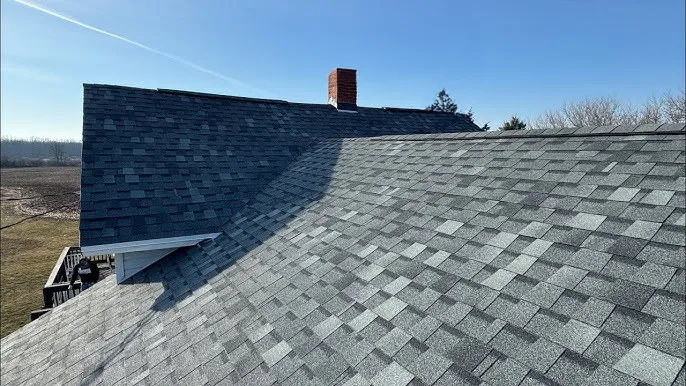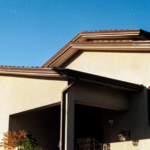Picture yourself walking through a quiet suburban neighborhood in Lynchburg, VA. As you admire the charming homes with their neatly manicured lawns, you can’t help but appreciate how every detail plays a role in maintaining their beauty and function.
One often-overlooked feature is the gutter system. Gutters in Lynchburg, VA, and in communities everywhere may not grab your attention at first, but their role in protecting homes and shaping urban development is more significant than you might think.

Unnoticed and underappreciated, these seemingly ordinary channels have orchestrated the safety and sustainability of cities for centuries.
As you continue to read this post you’ll learn the transformative role of quality gutters have played, and continue to play, in shaping the urban landscape.
The Emergence of Gutters
The story of gutters begins in the ancient civilizations of the Indus Valley and Babylon around 3000 B.C., where drainage systems were born out of necessity. With the rise of urban societies, humans quickly realized the destructive power of uncontrolled rainwater.
Buildings crumbled, streets became impassable, and diseases proliferated. To address this, the ancients devised simple yet efficient gutter systems to divert rainwater away from their constructions.
In Rome, the Empire took gutter development to new heights, incorporating it into their impressive engineering feats. Their extensive networks of aqueducts and gutters, some of which still stand today, ensured the efficient transportation of water throughout their cities, reducing flood risks and increasing hygiene.
Gutters and Urban Expansion
Fast-forward to the Middle Ages, the story of gutters was closely intertwined with urban expansion. As cities grew in size and complexity, the role of gutters became even more essential. Yet, it was not always smooth sailing.
The streets of medieval Europe, for instance, lacked proper guttering, which led to a plethora of sanitation issues. This culminated in disastrous health crises such as the infamous Black Plague. The deadly epidemic underscored the importance of proper water management, galvanizing authorities to improve gutter systems.
Modern Gutters and Urban Development
In the grand tapestry of urban development, the chapter on gutters in the modern era is particularly fascinating.
From the towering skyscrapers of New York City to the charming neighborhoods of Lynchburg, VA, gutters have not only evolved in form but also in function. Today, the work they do is more critical than ever, as they are tasked with the monumental job of keeping our rapidly expanding cities safe and sustainable.
One major advancement arrived during the 19th-century Industrial Revolution, a time of rapid urban growth and architectural innovation. Cast-iron became the material of choice for gutters, a significant leap from their wooden and stone predecessors.
The new material was not only more durable, but also easier to mass-produce and install. This allowed for quicker and more efficient construction of buildings, enabling cities to grow at an unprecedented rate. Gutters were no longer just an afterthought; they became an integral part of the urban infrastructure.
In the case of gutters in Lynchburg, VA, this evolution mirrored the city’s growth. As Lynchburg transitioned from a quiet town to a thriving city, its buildings required more robust and reliable systems to manage rainwater. Cast-iron gutters provided this reliability, enhancing the resilience of the city’s buildings and contributing to its ongoing expansion.
The Impact of Gutters Today
Now, let’s move into the 21st century. Today’s gutters, including those in Lynchburg, VA, have adapted to the increasing demands of climate change and intense urbanization.
They are designed to handle more frequent and intense storms, directing vast volumes of stormwater to safe disposal areas. This modern feature helps prevent soil erosion, safeguards the structural integrity of buildings, and reduces the risk of urban flooding.
In the era of green architecture and sustainability, modern gutters play an essential role as well. They facilitate rainwater harvesting, a practice that promotes water conservation by collecting and storing rainwater for later use.
This not only reduces our reliance on treated water but also contributes to the greening of cities by providing a sustainable water source for urban gardening and landscaping.
In Conclusion: The Undeniable Role of Gutters
The historical evolution and impact of gutters on urban development is truly profound. From the ancient civilizations to the bustling cities of today, gutters have shaped urban landscapes, safeguarded buildings, and enhanced the quality of life for urban dwellers. Even in modern Lynchburg, VA, gutters continue to silently protect our homes and businesses from the potential devastation of unmanaged rainwater.
Today, at BTB Roofing, we’re proud to continue this historical legacy. With over 27 years of experience, we’re committed to providing top-notch service and quality workmanship in roofing and gutter solutions. Interested in ensuring your property is safeguarded with effective gutters?
Contact us today, and let’s make history together!













0 Comments